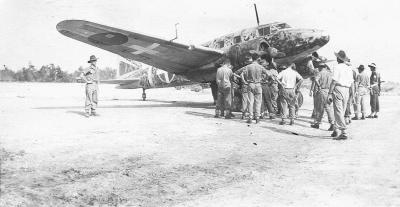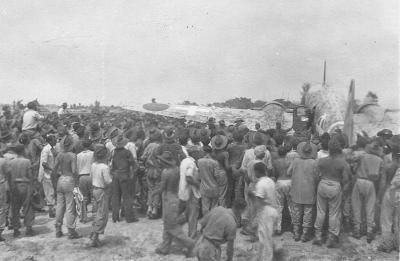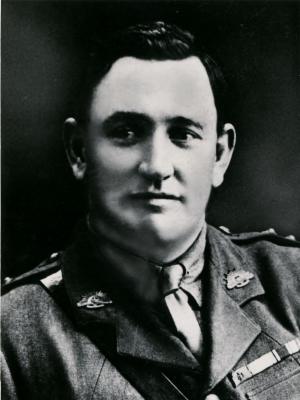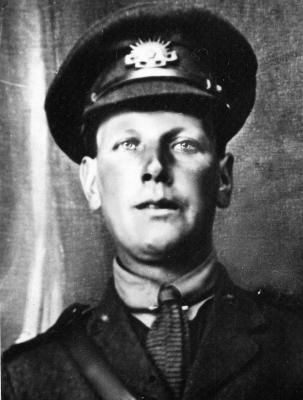World War 2, South West Pacific, Borneo, 1945
1945View of Japanese plane with Green Cross surrender markings landing on airstrip
The Borneo campaign of 1945 was the last major Allied campaign in the South West Pacific Area during World War II to liberate Japanese-held British Borneo and Dutch Borneo. Designated collectively as Operation Oboe, a series of amphibious assaults between 1 May and 21 July were conducted by the Australian I Corps, under Lieutenant-General Leslie Morshead, against Imperial Japanese forces who had been occupying the island since late 1941 – early 1942. The Australian ground forces were supported by US and other Allied air and naval forces, with the US providing the bulk of the shipping and logistic support. Landings were undertaken at four locations: Tarakan; Labuan; North Borneo and Balikpapan. Guerilla operations were also carried out by Dayak tribesmen and small numbers of Allied personnel in the interior of the island. While major combat operations were concluded by mid-July, mopping-up operations continued throughout Borneo until the end of the war in August. Initially intended to secure vital airfields and port facilities to support future operations, preparatory bombardment resulted in heavy damage to the island's infrastructure, including its oil production facilities. As a result, the strategic benefits the Allies gained from the campaign were negligible.
Details
Details
Japanese planes involved in the surrender process were requested to be painted in white and have the"Meatballs" (Rising Sun) replaced by a Green Cross.
Australian Army Museum of Western Australia
Australian Army Museum of Western Australia
Other items from Australian Army Museum of Western Australia
- World War 2, South West Pacific, Borneo, Green Cross Surrender Markings, 1945
- World War 2, Asia Borneo, Green Cross Surrender Markings,1945
- World War 2, South West Pacific, Borneo, Japanese Surrender, 1945
- World War 2, South West Pacific, Borneo, Green Cross Surrender Markings,1945
- World War 2, South West Pacific, Borneo, Green Cross Surrender Markings,1945
- World War 2, South West Pacific, Borneo, Japanese Surrender,1945
- Pre 1914, 2nd Anglo Boer War, BELL VC, Western Australian Mounted Infantry, 1901
- World War 1, Europe, MCCARTHY VC, 16 Battalion, 1918
- World War 1, England, AXFORD, 16 Battalion, 1918
- World War 1, England, SADLIER, 51 Battalion, 1918
- World War 1, England, MURRAY, 1918
- World War 1, Europe Western Front, 28 Battalion, GABBY VC,1917













